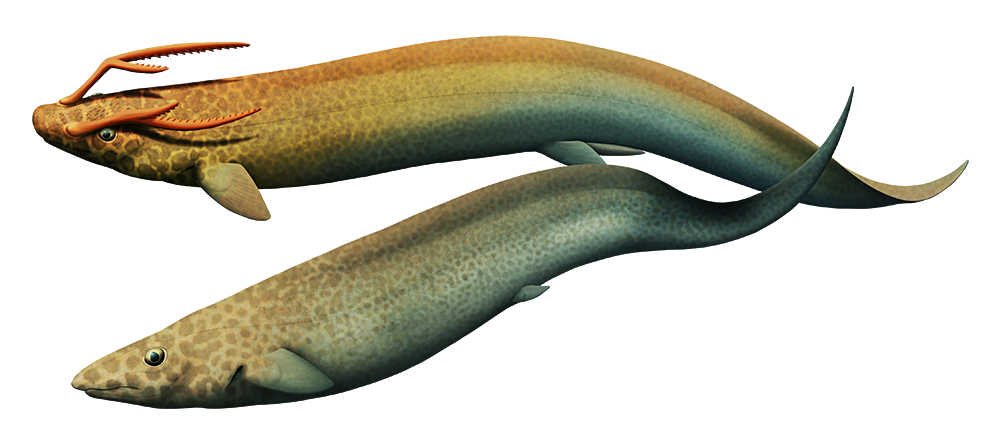Sometimes sexual dimorphism in the fossil record is hard to identify for certain – and sometimes it’s incredibly obvious.
Harpagofututor volsellorhinus here is a wonderful example of the second category. This 17cm long (~7″) cartilaginous fish was a distant relative of modern chimaeras, and lived during the Early Carboniferous about 326-318 million years ago in the shallow tropical sea that formed the Bear Gulch Limestone deposits in Montana, USA.
While all specimens show an elongated eel-like body, they come in two different forms: one with a fairly normal skull, and one with a pair of huge jointed cartilaginous appendages in front of its eyes that resemble antennae or antlers.
The presence of large claspers on the “antlered” forms indicated they were males, with the weird appendages probably being used either for display or as “grappling hooks” to hang onto females during mating.
(Modern male chimaeras also have clasping structures on their heads!)
Meanwhile a couple of non-antlered specimens preserved with unborn offspring still inside their bodies confirmed that these unadorned forms of Harpagofututor were indeed females. Some of their young were quite large and well-developed, suggesting live birth, and with multiple different fetal growth stages found within a single mother it’s also a rare example of fossilized superfetation.

